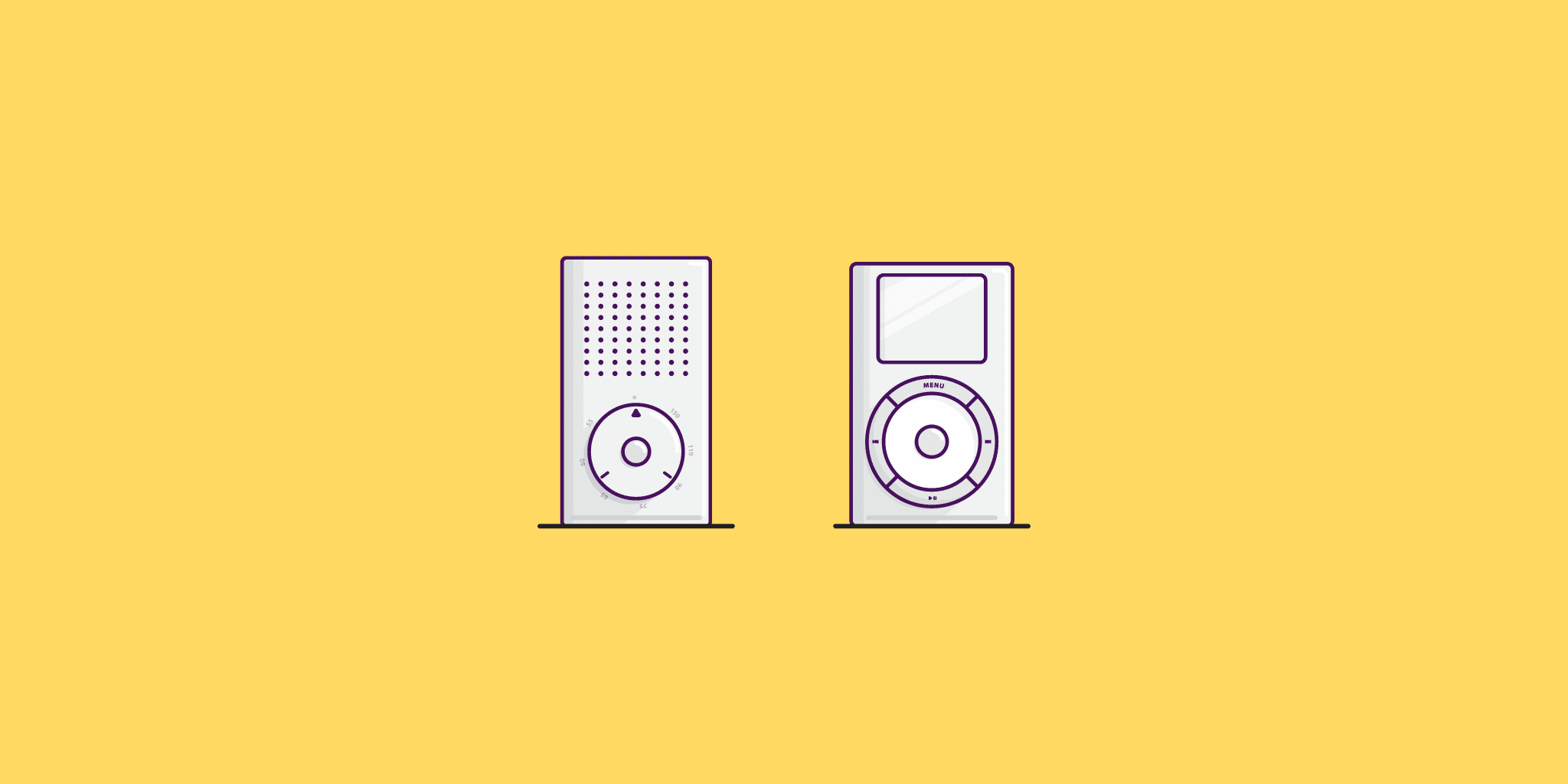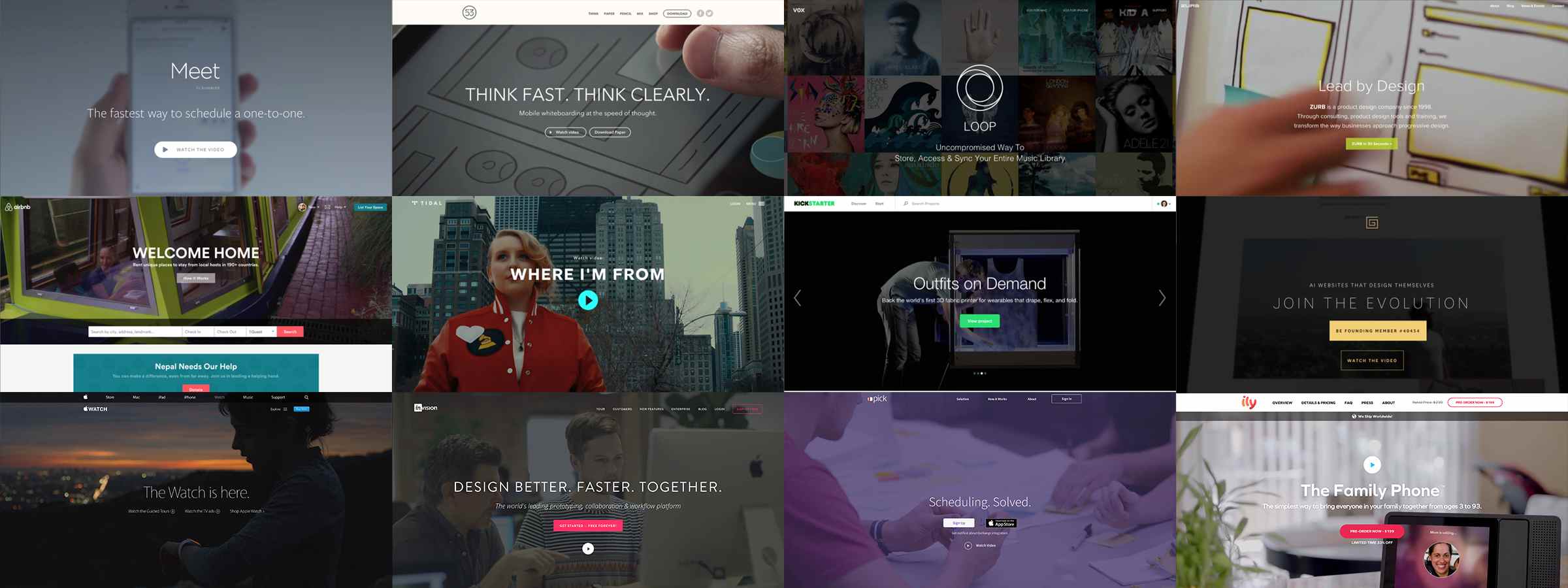The February 27, 1967 edition of the Associated Press carried a rather intriguing story on it.
A story, which would go on to pique the interest of psychologists, and be instrumental in the strengthening of a then-nascent psychological phenomenon.
“A mysterious student has been attending a class at Oregon State University for the past two months enveloped in a big black bag. Only his bare feet show. Each Monday, Wednesday and Friday at 11:00 A.M. the Black Bag sits on a small table near the back of the classroom. The class is Speech 113 – basic persuasion… Charles Goetzinger, professor of the class, knows the identity of the person inside. None of 20 students in the class do. Goetzinger said the students’ attitude changes from hostility toward the Black Bag to curiosity and finally to friendship.”
Even though the identity of the “Black Bag” student never came out in the open, the behavioral transformation of his classmates raised a lot of eyebrows.
What made them change their attitude so drastically?
“Familiarity,” stated the pioneer of social psychology, Robert Zajonc.
He used the incident to back what he called the “mere-exposure effect”, according to which people tend to develop positive feelings towards things merely because they are familiar with them.
Let’s suppose you’re on a holiday in Oreobourg. You’re new to their culture, their language, their sandwich cookies, and their people. One fine morning, when you are taking a leisurely stroll in a park, you notice a little kitten stuck on a tree.
You’ve climbed almost every single tree in your neighborhood and are all set to save the day. But before that, you need to entrust someone with your belongings. You look around and find two people – two complete strangers – in the vicinity: a guy who looks like someone from your country, and an Oreobourger.
Now who’d you give your stuff to?
The answer’s quite obvious, isn’t it?
For all we know, the guy from your country could be a conman. Yet, in a moment’s affair, you’d feel more confident and secure in dealing with him and not with the Oreobourger.
And that’s the familiarity bias for you.
It’s the working of our lizard brain, which translates unfamiliarity to danger, and looks out for security in things/situations that are known, comfortable, and familiar.
People prefer things that are familiar to them. People root for the local sports teams. Employees like to own their company’s stock. The sports teams and the company are familiar to them
The expression “familiarity breeds contempt” doesn’t make much sense. In fact, familiarity breeds trust.
So for a business that’s planning to tread the global waters, building trust in the minds of foreign customers will be the deciding factor, which in turn will happen by making your offering familiar to them.
Well, that’s just one piece of the puzzle. Let’s get to the others.
The enigma called the Chinese market
Global giants like eBay, Groupon, Best Buy, etc., have tried their hand at penetrating this lucrative territory and have failed. Amazon China is still much smaller compared to Alibaba.
Despite their aggressive strategies, Uber currently handles over 1 million rides a day, while its local rival Didi Chuxing claims to be handling over 11 million rides a day.
Google China has still not made much improvement in its efforts of overtaking the Chinese search engine behemoth Baidu. Baidu owns a whopping 80% of the market, leaving Google China with around 12% of it. Apart from the Chinese government’s efforts to curb Google’s activities, a major reason for the popularity of Baidu is believed to be the fact that it uses the local language, and looks and feels native.
So what went wrong?
The quest for good design
Dieter Rams, the most celebrated designer of Braun – the German manufacturer of exquisite consumer gadgets from juicers to radios – was known for his stripped-down, understated design. His design approach, which was later documented as the Ten principles for good design, has been successfully adapted by a lot of global brands.

Jonathan Ive, Apple’s Chief Design Officer, is one of his ardent followers.
When Ive talks about Rams designing “surfaces that were without apology, bold, pure, perfectly-proportioned, coherent and effortless”, he could equally be talking about the iPod. “No part appeared to be either hidden or celebrated, just perfectly considered and completely appropriate in the hierarchy of the product’s details and features. At a glance, you knew exactly what it was and exactly how to use it.” – The Telegraph
And it showed.
Apple isn’t alone.
Rams’ Less, But Better principle has caught up like wildfire and has been used in designing almost everything from furniture to electronics.
The online industry soon followed suit. Websites brought down the amount of content, included more white space, moved to flat graphics, adopted the minimalist approach.
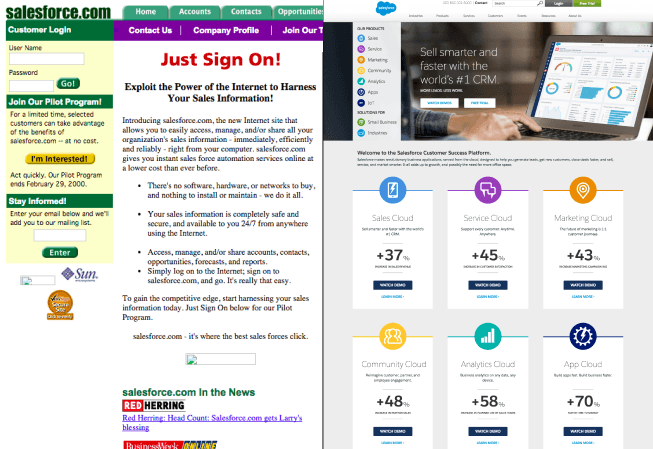
And then, this happened.
The dribbblisation of design or as the others put it, the digital apocalypse, ensued. It’s the era where every single website has become a zombie clone of every other website.
The work we produce is repeatable and predictable. It panders to a common denominator. We build buckets and templates to hold every kind of content, then move on to the next component of the system. Digital design is a human assembly line.
Whatever has happened has happened because of one main reason: not paying enough attention.
We just need to look a bit harder. Or rather, look inside. While the other websites just aped the aesthetic principles of Rams, they failed to emulate his other advice – of a good design being innovative, useful, and making the product talk.
A product is bought to be used. It has to satisfy certain criteria, not only functional, but also psychological and aesthetic. Good design emphasises the usefulness of a product whilst disregarding anything that could possibly detract from it.
Jonathan Ive did just that. He went to the lengths and depths of tweaking every minute element of his products. The research, commitment, and attention to detail are what made Apple’s products special.
People are different. So should your approach be.
IKEA gets that. Their country-specific websites are completely different from each other; they are anything but cloned.
Before entering a new country, IKEA would send their massive team of enthusiastic curious thinkers to almost every nook and corner of the region, to conduct an extensive research on their lifestyle and furniture preferences.
And those results aren’t used to tailor just their product offerings.
Take a look at IKEA’s current homepages for Netherlands (left) and Japan (right):
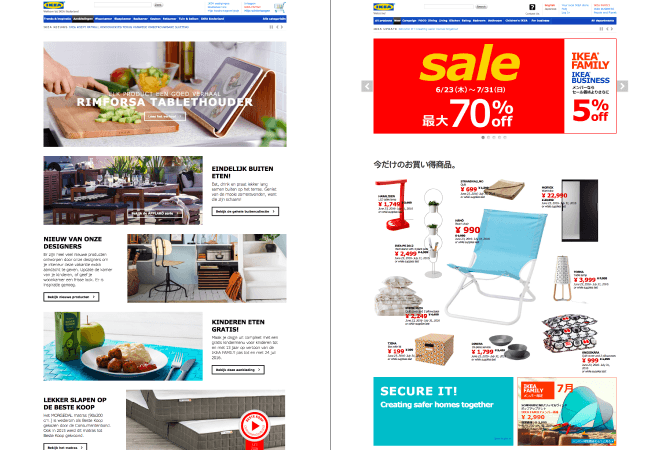
Such stark differences. And they’re there for a reason.
The Japanese website has a carousel slider on top, employs less copy and more images, is bright and colorful, and has an easy-going air around it. On the other hand, the Netherlands website focuses more on content, no carousel slider (hence no movements), and has a well-structured, formal layout.
Anthropologist Edward T. Hall classified cultures into two types: High-context (Japan, France, Russia, etc.) and low-context (Scandinavia, USA, UK, etc.) cultures.
While the high-context cultures emphasize on collectivism and pay more attention to the context rather than the words of a message, the low-context cultures root for individualism and focus on a message’s words more than its context.
Now, go back to the screenshot. It all makes sense now, doesn’t it? Notice how the Netherlands page has a person involved in an individual activity, and how the grouped items on the Japanese page induces a communal feeling.
Why bother? Because when your prospective and current customers feel at home at your site, they will feel at home with your brand in a way that builds trust – a cornerstone for building relationships. They say home is where your heart is — make your site that place for your customers!
The SaaS counterparts
In 2010, about 85% of SurveyMonkey’s business was carried out in English. By 2015, they were supporting 17 languages and 28 currencies. And to achieve such a strong global presence, they had to glocalize every minute aspect of their websites, pricing, and payment methods.
No matter who you are, or whether you have a commerce app or a content app, you definitely have sites where you’re trying to sell people on your product or your company. The sites have to be different for every market.
SurveyMonkey followed an approach similar to IKEA, with regard to their websites. However, it is not just their website design that had to be changed for every region. For instance, Tobaccowala recalled how their USP for recruitment in the US – the fact that employees loved working there – failed to resonate with the Russian audience.
It begins with the common tongue
The market research firm Common Sense Advisory surveyed about 351 businesspeople in eight English-speaking countries, regarding their software purchase behavior.
The research revealed that about 9 out of 10 buyers preferred products which have been adapted to their local markets; they were more likely to buy products with the product information in the local language, and with the interfaces localized.
Pipedrive grew from 0 to 10,000 paying customers in just five years. Among those multiple hacks that have been attributed to this rapid growth, their localization strategy holds a prominent spot.
With an independent team set up for localization, Pipedrive went one step further. Before translating their website content, they got their entire app content translated to Spanish, German, Russian, Brazilian, Portuguese, French, and Estonian in the early stages of the company.
What more? Their customer support agents for each country belong to that country.
As you know, only some of the markets in the world are English language markets. A large part of the world, just one example, South America, they speak Portuguese or Brazilian Portuguese and Spanish, mostly. It’s difficult when you have an SMB with a very self-serve model to enter that market when you don’t have the product, the website, the knowledge base, the customer support talking to you in your own language. So, we made a very dedicated effort to get that done early on.
And ends with the cash register
Hubspot, Google, Salesforce… The list can go on and on. There’s a reason behind these global (or glocal) companies offering a multi-currency pricing.
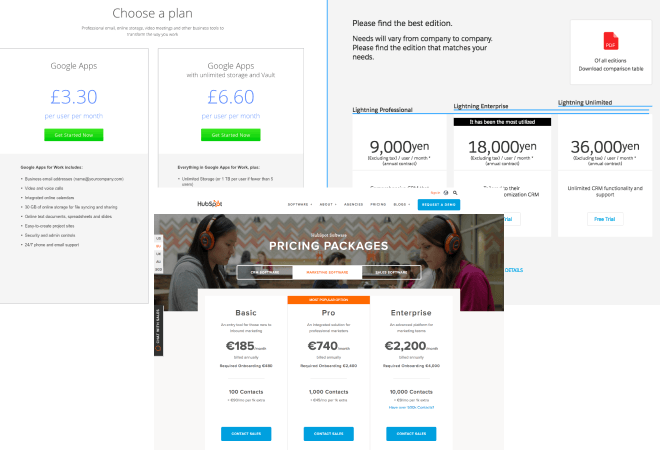
A little treat for the statistics junkies who haven’t bought it yet: prices presented in a foreign currency is among the top fourteen causes for online buyers to abandon a site, according to a Statista report.
Similarly, every country has its own preferred payment method.
To give you a snapshot, the UK consumers prefer to pay by credit or debit cards, those from the Netherlands predominantly use their native bank transfer method called iDEAL, ELV (an electronic direct debit payment method) is the most popular option in Germany, and Alipay dominates the Chinese market.
So in this day and age, offering alternative payment options has become inevitable even if you’re not catering to a global audience.
Get down to the brass tacks
Rome wasn’t built in a day.
Even though SurveyMonkey and Pipedrive have illuminated the ideal path to be taken by a global SaaS business, that doesn’t mean that you must nail all the elements overnight. Small, planned steps taken at the right time will eventually get you there.
The right mindset, however, must be present right from day one: the mindset to put in the extra effort to understand your customers, to pay attention to detail, and to show them that you care.
I think to start with, it has to be the belief or desire that you want customers from that region and you want to serve them and you kind of want to go the length of however long that will actually take you to get there.
P.S. Stepping into a new country? We’ve got your first step covered. With Chargebee, you can accept payments in 100+ currencies. And oh, did we mention that your first $50k is on us? Sign up and give it a spin!




